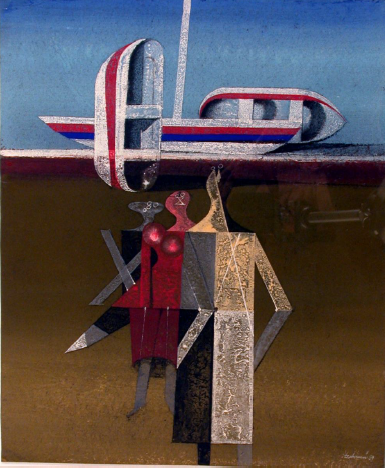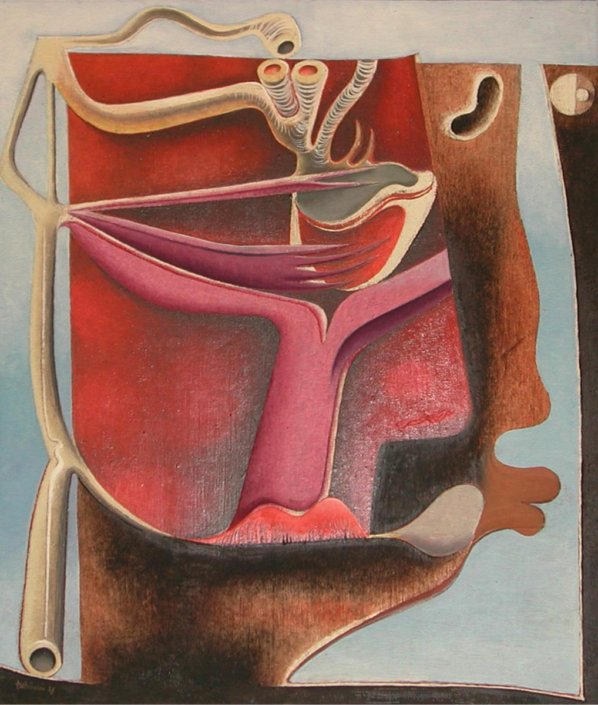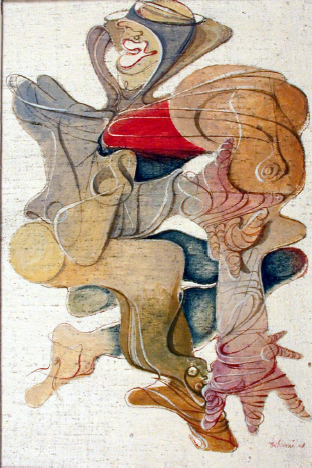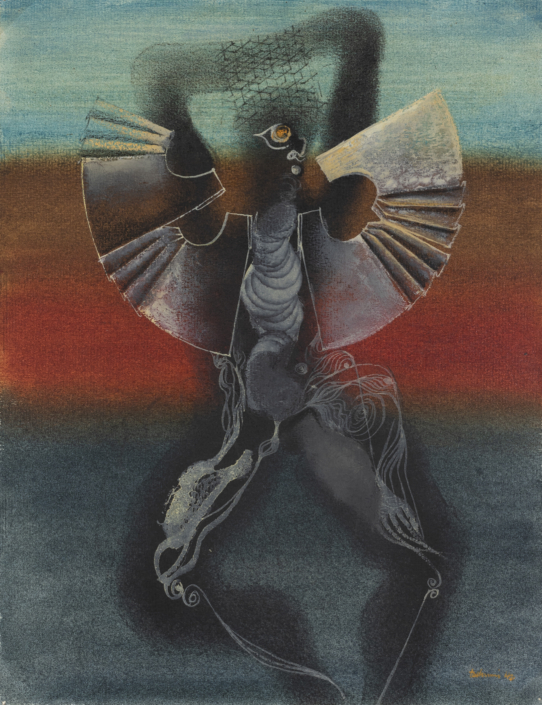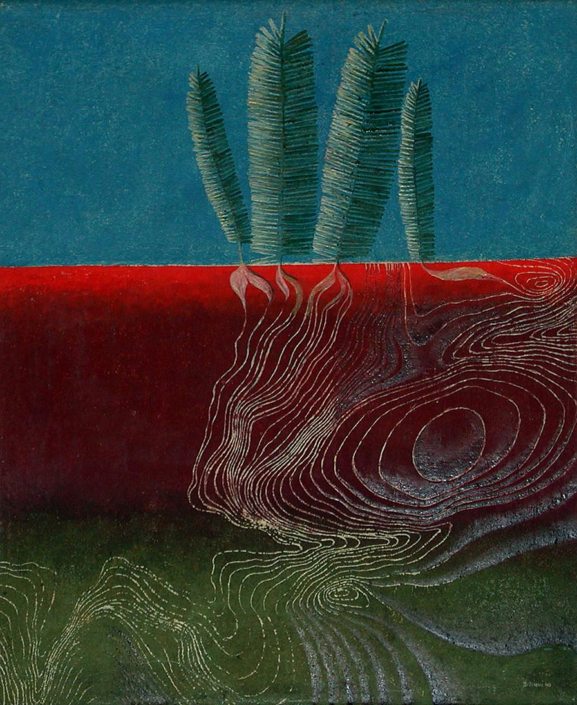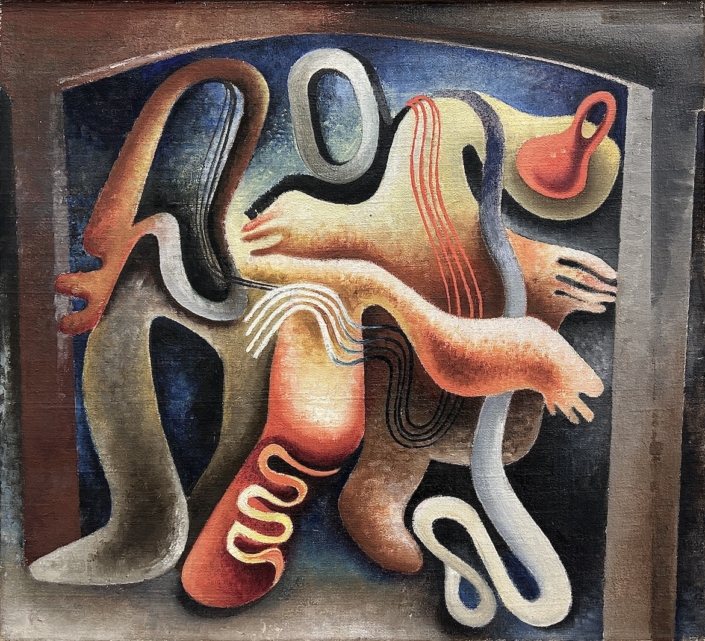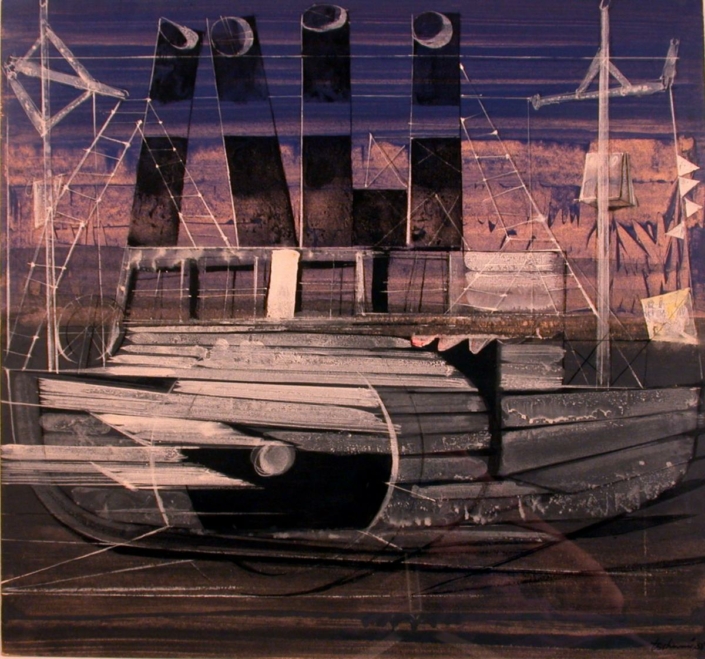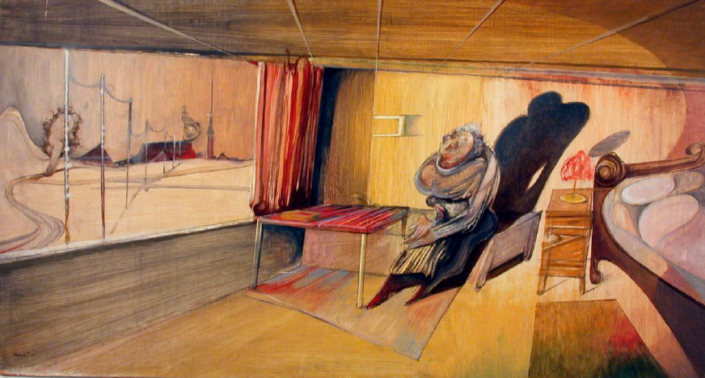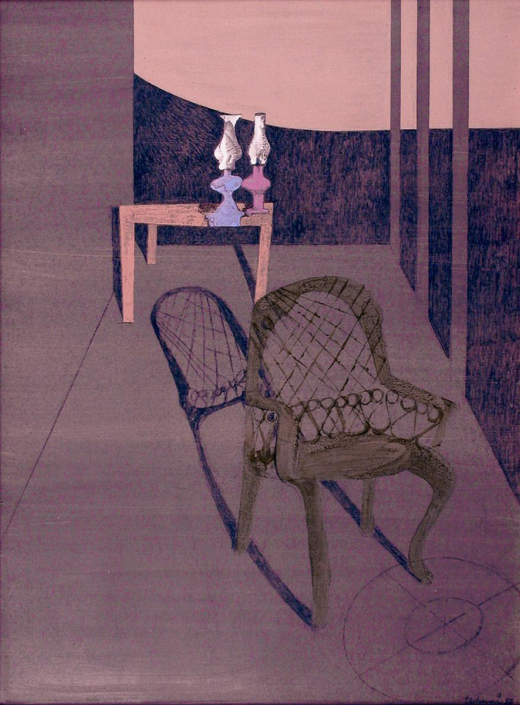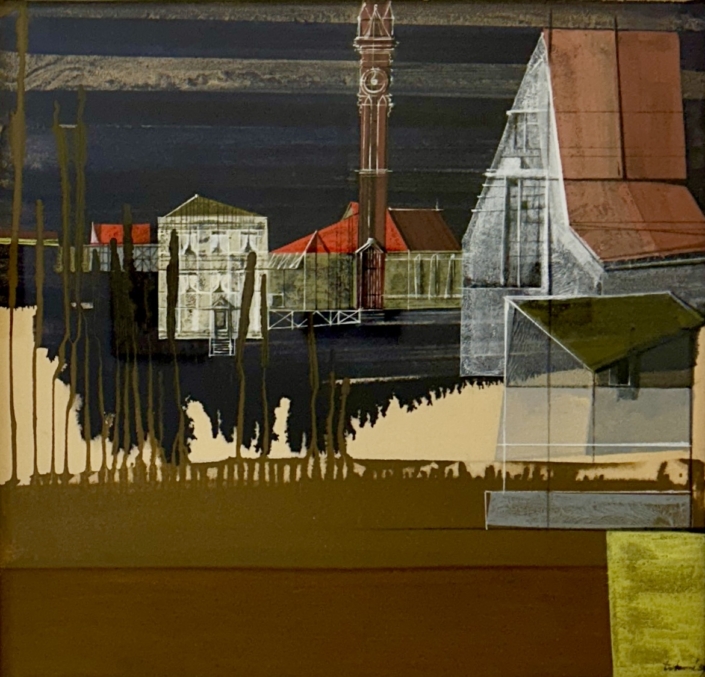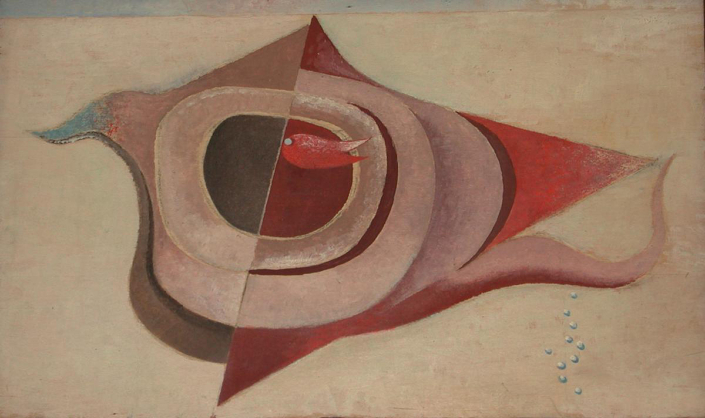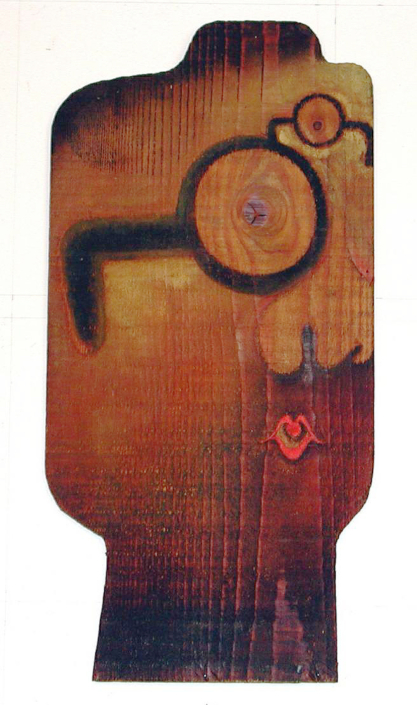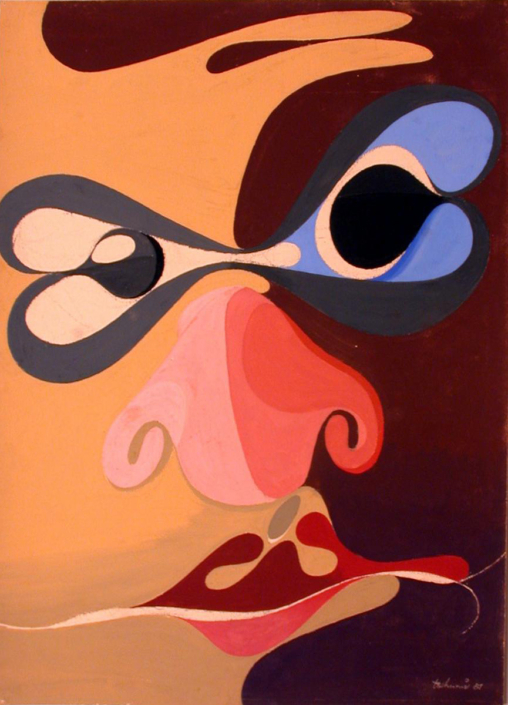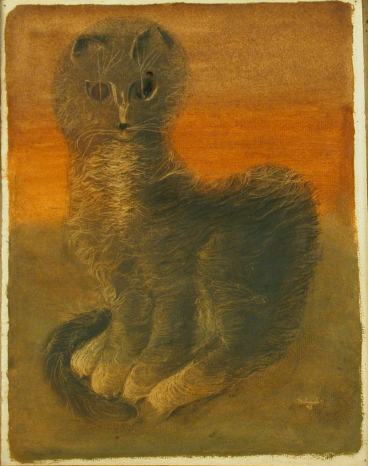Otto Tschumi ‹Mitschuottotschumi›
27.9. – 2.11.2024
Otto Tschumi was born in Bern on August 4, 1904 – contrary to the official entry, which gives Bittwil as his place of birth. He grew up in the capital in modest circumstances. After unsatisfactory attempts in various professions, he initially earned his living as a graphic artist and attended courses at the trade school with Ernst Linck between 1921 and 1925. He described himself as self-taught. In 1936, Tschumi moved to Paris with his wife, the dancer Beatrice, formerly Gutekunst, where the couple moved in the circle of surrealists and met Hans Arp, Max Ernst, Alberto Giacometti and Salvador Dali, among others. The attitude formulated in the Surrealist manifesto, the demand to overcome conventions and apply the principle of the subconscious, suited Tschumi. In 140, the couple had to flee Paris. After a longer stay in Ticino, the Tschumis settled in Bern, where the artist lived until his death. He put the impressions he had gained in France into practice in the following, extremely fruitful years. In 1952, the couple undertook a long trip to America, which made a lasting impression on Tschumi. He took part in numerous group exhibitions, but never joined an artists’ association and developed his own “Tschumiian” surrealism, which he continued to refine until the end – he died on February 18, 1985. His technical perfection can hardly be surpassed. Parallels to photography cannot be overlooked in his design principles. Tschumi’s Surrealism differs from that of the other Surrealists in its greater proximity to reality, but above all in its sublime, poetic and ironic way of experimenting with levels of reality. Along with Alberto Giacometti, Meret Oppenheim, Serge Brignoni and Max Seligmann, Tschumi was one of the most important Swiss Surrealists and had a decisive influence on Swiss art in the 20th century.
Text: Art Nachlassstiftung


